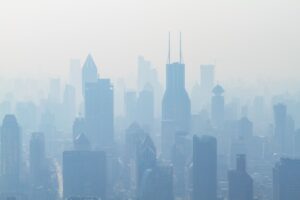Effects of Food Pollution on Human Health: Food pollution, in simpler terms, is the presence of harmful substances and toxins, both chemical and biological, in food which may or may not be naturally found. From mild to severe, food pollution can affect each of us differently. In some rare cases, more lethal than others. It is not possible to determine all the time whether the food you are consuming is intoxicated or not. Here is an insight of how harmful food pollution is:
- It is very likely to develop hormonal and/or metabolic disorders through consuming polluted food which can later lead to as serious issues as cancer in some cases.
- Out of all the types of food, fish is the most dangerous than any other since its exposure to the diverse range of contaminants and high concentration.
- Organic food is not always necessarily unpolluted food! It is very likely that organically grown food is swarmed by bacteria because of the lack of pesticides and insecticides.
- Chlorpyrifos, a type of pesticide, is known to cause visionary and neurological impairment. It is believed that this specific pesticide has 13% presence in our daily dietary samples.
- Every year, there is an average occurrence of 70 million food related illnesses which leads to 5,000 deaths per year just by food-borne problems alone!
- Food pollution is knitted like a web, for example, if there is a batch of apples growing on contaminated soil, the whole produce is now contaminated. A human eating this apple would consume a “polluted food”.
- It is safer to grow food in factories than to grow outdoors since the risk of environmental pollution can be controlled and minimized.
- Poultry (33%) is the second most consumed meat in the world after pork (36%), which is these days most often than not broiled. Broiling is basically injecting chemicals in the produce to make them grow faster. These injected toxins are known to cause hazardous effects on female ovaries.
- Mycotoxins, a type of naturally occurring toxin, were 100% present in all of the 363 samples of cereal-based infant food that were tested
- There is an average of 9 different types of plastic materials found in 10 grams feces of eight different individuals which means, more than 50% of the world population has microplastic concentrate contamination in their stool.







